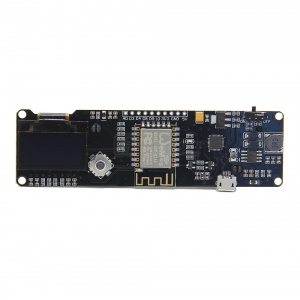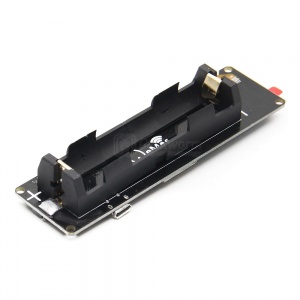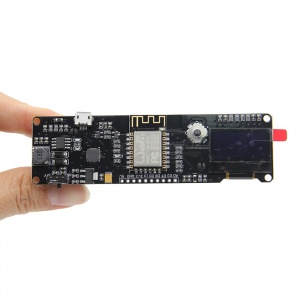WEMOS ESP8266 Board with OLED & 18650 Battery Holder
Features
- One AD inputs.
- Micro USB inputs.
- One programmable LED (D0).
- Integrated 18650 battery charging and discharging system.
- One switch controls whether the 18650 battery is powered or not.
- OLED's SDA and SCL connect to the D1 pin and the D2 pin respectively.
- The five buttons are controlled by FLATH, RSET, D5, D6, and D7 respectively.
- The 5 Digital pins can configure the write/read/interrupt/pwm/I2C/one-wire supported separately.
- Operation and NodeMCU consistent, adding a programmable LED, you can use GPIO16 to control, display 8266 running status and other functions. Integrated OLED and five button, more convenient for development.
- The design concept originates from the open source project NodeMCU, and the development board integrates 18650 charging and discharging systems with charging and discharging protection. At the same time, a OLED and five directional buttons are integrated to facilitate the development.
Specification
- Charging Protection:Yes
- Discharge Protection:Yes
- Compatible With Arduino
- Compatible With NodeMCU
- Wide Voltage Input Range: 5V~12V
- Charge Current:500 mA
- Size(L*W*H):102 x 30 x 20 mm
- Display Size: 0.96 Inch



Enable comment auto-refresher
Anonymous user #4
Permalink |
Anonymous user #4
Walker
Anonymous user #3
Permalink |
Walker
Anonymous user #1
Permalink |
Anonymous user #2